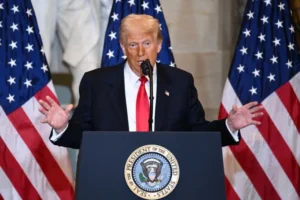
Former U.S. President Donald Trump has called on the U.S. Treasury to stop minting new pennies as part of efforts to reduce government spending. The move, aimed at cutting costs associated with coin production, aligns with longstanding debates over the economic viability of the one-cent coin.
Trump, who has been vocal about reducing wasteful government expenditures, argued that the production of pennies costs more than their actual monetary value. Reports from the U.S. Mint indicate that it costs approximately 2.7 cents to produce a single penny, leading to significant financial losses for the federal government each year.
“The American people shouldn’t have to pay extra just to keep making a coin that nobody really uses anymore,” Trump stated. He emphasized that eliminating penny production could help redirect government funds to more pressing economic priorities.
The proposal has sparked mixed reactions among economists and policymakers. Supporters argue that discontinuing the penny is a practical step, as digital transactions continue to dominate daily commerce. However, critics warn that rounding transactions to the nearest nickel could lead to unintended economic consequences, including potential price increases.
This is not the first time the issue of penny production has been raised in U.S. politics. Previous administrations have considered similar measures but ultimately refrained from ending the coin’s circulation due to public resistance and concerns from industries reliant on cash transactions.
While Trump’s directive does not immediately eliminate existing pennies from circulation, it signals a push toward phasing out the coin. The U.S. Treasury has yet to announce its official stance on the matter, and any permanent decision would likely require congressional approval.




